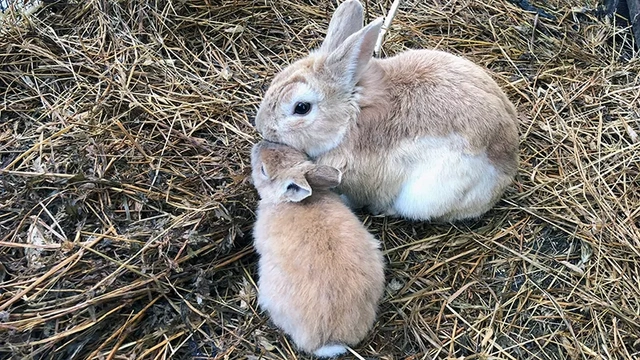
Flystrike in rabbits and other small furries
Flystrike is commonly caused by blue bottle and green bottle flies. Flystrike can strike very fast! Flies are attracted to urine or faeces, either in the rabbit hutch, or on the rabbit. They are also attracted to blood from wounds. Flies then lay their eggs on the fur surrounding the affected area. These eggs hatch into maggots within hours, which then burrow into the flesh of the rabbit and release toxins.
What causes flystrike?
Rabbits can develop dirty fur around their bottoms for several reasons. Long teeth, digestive problems and wounds put rabbits at risk of getting dirty bottoms, which attract flies. These problems are all preventable with careful management. Lack of clean accommodation allows faeces and caecotrophs (the droppings that rabbits need to eat for a healthy gut) to stick to the skin. Obesity or mobility problems lead to poor grooming and this can also predisposes your rabbits to fly strike.
Treatment of flystrike
Flystrike is an emergency situation. If you see any evidence of maggots on your rabbit then we recommend that you contact your vet straight away. Often you may only see one or two on the surface of the skin, or in the hutch. However, under their fur and skin will be many more. This condition can be fatal so time is of the essence.
Your vet will usually recommend sedating or anaesthetising the rabbit so that the maggots can be removed manually. Prescription antibiotics, anti-inflammatory and pain relief medications may be required. Intravenous fluids are often given to try and prevent the rabbit going into shock.
How to prevent flystrike in your rabbits
- Prevent your rabbits becoming overweight. Overweight rabbits move around less and are at increased risk of fly strike. They should have regular health and weight checks so that mobility problems or obesity can be spotted early and treated, as necessary
- Provide a suitable diet for your rabbits. Rabbits need three different food types for a healthy diet - a constant supply of hay or fresh grass to nibble on (85-90%), a variety of fresh veg and leafy greens (10%) and a small quantity of high-fibre pellets (5%). The amount of herbs and vegetables to feed usually equates to about the size of your rabbit’s head, per day. Good foods include spinach, kale, watercress, broccoli, celery, carrot tops and dandelion leaves. Rabbits also enjoy munching on fresh herbs such as mint, parsley, dill and thyme. Vegetables like carrots or sweet potatoes or fruits like apples have a higher sugar content. They should only be fed in small amounts and not very often, as they can cause diarrhoea. More advice about feeding your rabbits can be found in our article
- Keep the hutch clean and remove soiled material daily. This is especially important in hot weather. Encourage your rabbit to toilet in one area. Many rabbits can also be litter trained, which will make it easier to keep the hutch clean.
- Ensure that your rabbit’s hutch is large enough. This enables them to move away from their toileting areas, and have space to stretch out on clean bedding. Reducing the risk of soiled fur will reduced the risk of fly strike
- Trim long fur around your rabbit’s bottom. Lift your rabbits up twice each day to check that their fur is clean and dry underneath
- Use protective products, such as Rearguard. These should be applied in late Spring/Early Summer. They reduce the risk of fly strike by preventing fly eggs from developing and hatching. This method of preventative care must be used together with good housekeeping
- Reduce the fly population around the hutch or run. Fly traps, fly tapes, fly screens, or growing fly-repelling plants in pots, such as Laurel, Basil and Lavender, will help with this
Still worried?
Book a video appointment to have a chat with one of our vets.



